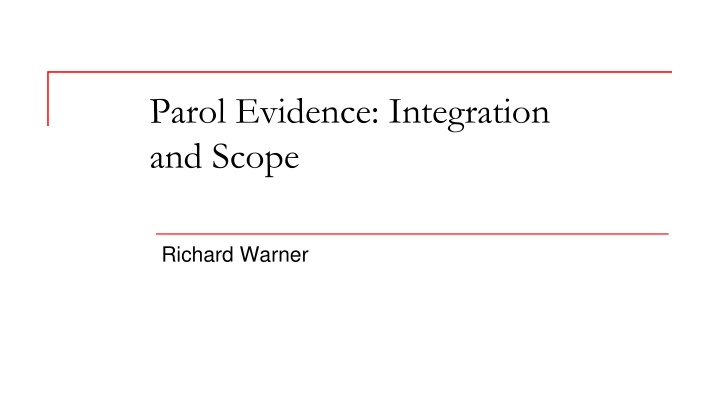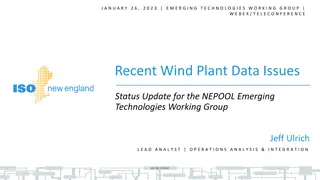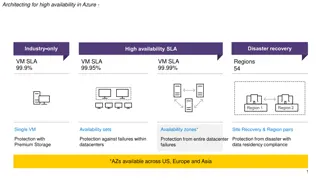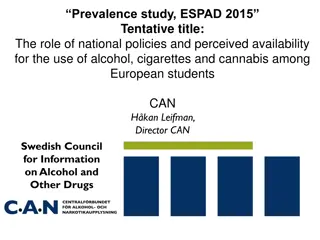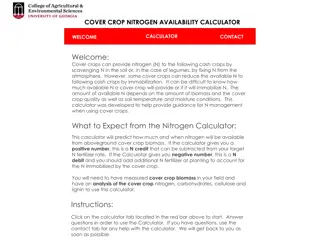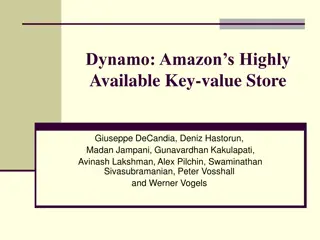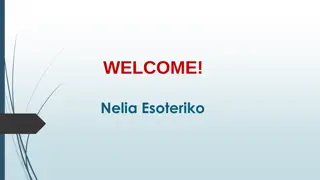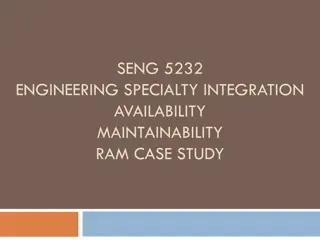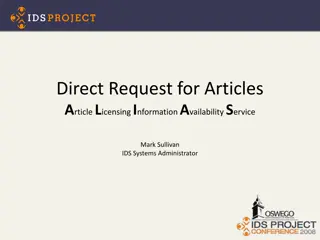HDB++: High Availability with Cassandra Overview
Cassandra, a massively scalable open-source NoSQL database, is explored in this overview discussing its architecture, utilization, and advantages. Dive into the details of Cassandra's peer-to-peer architecture, continuous availability, and support for hundreds to thousands of nodes, offering high write throughput and read efficiency. Learn about Cassandra Query Language (CQL) and its similarities to SQL, along with its restrictions and limitations on JOIN requests.
Download Presentation

Please find below an Image/Link to download the presentation.
The content on the website is provided AS IS for your information and personal use only. It may not be sold, licensed, or shared on other websites without obtaining consent from the author.If you encounter any issues during the download, it is possible that the publisher has removed the file from their server.
You are allowed to download the files provided on this website for personal or commercial use, subject to the condition that they are used lawfully. All files are the property of their respective owners.
The content on the website is provided AS IS for your information and personal use only. It may not be sold, licensed, or shared on other websites without obtaining consent from the author.
E N D
Presentation Transcript
Parol Evidence: Integration and Scope Richard Warner
The Rule Terms of a side agreement are unenforceable if (a) they contradict the written agreement; or (b) the written agreement is a complete integration and the side agreement falls within the scope of the written agreement.
Complete Integration A written document is a complete integration if the parties intend it to be the complete and final statement of their obligations to each other.
Mitchill v. Lath Again No one denies these facts: The Laths promised to remove the ice house in an oral agreement satisfying the requirements of offer, acceptance, and consideration. The parties intended the agreement to be legally enforceable. The oral agreement was essential to Mitchill s decision to enter the written contract for the sale of the land even though it was not mentioned in the written agreement. Is the written agreement a complete integration? (a)Yes (b) No
The Mitchill Majority The majority holds that the written contract is a complete integration. It bases its decision exclusively on the content of the contract without considering evidence provided by the circumstances in which it was negotiated. The dissent objects that this is an irrational approach.
What Is A Complete Integration? A written document is a complete integration if the parties intend it to be the complete and final statement of their obligations to each other.
What Is An Entire Agreement Clause A clause that says that the agreement represents the complete and exclusive statement of the parties obligations. The clause is evidence and never decisive evidence that the contract is a complete integration.
What is scope? Normal inclusion test: if the parties would normally have included the side agreement in the complete integration, the side agreement is presumptively in the scope of the complete integration. This presumption is rebuttable.
Owner and Contractor Contractor and Owner agree that Contractor will build an addition to Owner's factory. During construction, the Fire Marshal says that smoke vents and annunciator panel are required; the Contractor's plans did not include these; additional cost: $35,000. The contract contains an entire agreement clause as well as this clause: "Contractor shall give all notices, comply with all applicable laws, ordinances, rules and regulations. Contractor agrees to indemnify the Owner from any loss, liability, or penalty which might result from the Contractor's failure to comply with any applicable law, ordinance, rule, or regulation." When signing the contract, the parties orally limited indemnification to only relatively small losses. The written contract does not mention that limitation. The court held the written contract was a complete integration, and it held the oral agreement was enforceable. The court must have thought (a) The oral agreement was in the scope of the written contract. (b) The oral agreement was not in the scope of the written contract.
